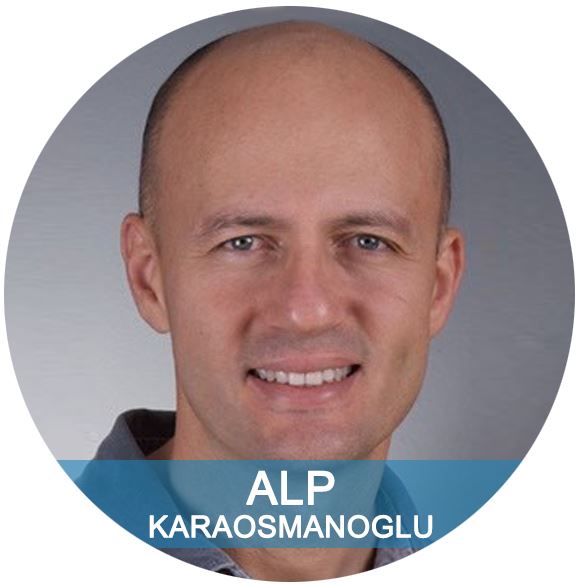- Home
- About
- ISST Board Elections
- 2020 Elections
- Alp Karaosmanoglu Personal Statement 2020

PERSONAL STATEMENTDear ISST Members, Serving as a founding member of the group that established ISST in 2007, and as Vice President from 2012 to 2014, I have had many opportunities to learn about the critical role of the Executive Board, along with the challenges ISST faces. Now, as I announce my run to become President of ISST, my goals are to use all of my experience and knowledge to advance schema therapy, while ensuring the continued growth of ISST. From my earliest memories, I longed to become a psychotherapist. After graduating from medical school, I completed my psychiatric residency working for five years in a mental hospital with the capacity to treat up to 1,800 patients with acute, chronic and residual mental disorders. I furthered my passion and enhanced my knowledge during my psychiatric residency by taking additional courses in several psychotherapeutic approaches, including psychodrama, psycho-dynamic therapy and Ericksonian hypnosis. After completing my residency in 1999, I opened a private psychiatric clinic. At the end of my first year in private practice, a client I treated with bipolar mood disorder attempted suicide. Fortunately he survived. His attempt had a significant effect on me, influencing me to question my therapeutic approaches. I searched for more effective, structured, and empirically-validated approaches, leading me to cognitive behavior therapy (CBT). After extensive training and supervision, my confidence increased as I applied CBT using controlled studies. However, I began to miss the techniques I had originally been trained in, including transference and countertransference, imagery, and most of all, parts work, comparable to our conceptualization of schema therapy modes. On an evening in 2002, feeling dissatisfied about my choices on television, I randomly opened a book about CBT, reading a chapter about schema-focused cognitive therapy. To my delight, I read about a measurable therapeutic approach, integrating experiential, relational, cognitive and behavioral techniques. I immediately reached out to Dr. Jeffrey Young, the founder of schema therapy, and arranged to translate all of the schema therapy questionnaires, along with Reinventing Your Life. In short order, we organized a workshop in Istanbul, presented by Dr. Young, introducing Turkish psychotherapists to schema therapy. In 2006,I met with most of the pioneers of schema therapy in Stockholm, and in 2007 was a member of the founding group that established ISST, and I served on the first ISST Executive Board. In 2014, serving as Vice President of ISST, I organized ISST’s International Conference in Istanbul, with our largest conference up until that time, hosting over 400 participants. Supported by a fantastic team, the conference was a big success. The highlight of the conference occurred during the final night at the gala dinner, located onboard a boat cruising down the Bosphorus River. Schema therapy strongly influenced my personal and professional growth. In return, I worked hard to develop new ideas, new research, and new applications. I have written numerous articles on the psychometric properties of the schema therapy questionnaires and schema therapy model. I authored four books on schema therapy, including two introducing concepts on basic psychological needs, namely the need for “fairness” and the need for “freedom.” The third is Schema Fairy Tales, a book for children. Understanding that childhood fairy tales are often full of themes reinforcing maladaptive schemas, I included stories with messages to develop healthy voices, in contrast to the over-responsible, perfectionist and self-sacrificing messages found in traditional fairy tales. Additionally, two of the fairy tales are on schema.tv as cartoon movies: “The Pessimist King” and “The Untalented Prince.” The fourth book I authored is about romantic relationships and schema chemistry. With various colleagues we have translated over 30 schema therapy and CBT English and German books into Turkish. Titles translated include:
For nearly 20 years I have worked with numerous colleagues introducing schema therapy to professionals and to the general public. We have created two schema therapy Youtube channels, in Turkish and English. For the Turkish channel, in the span of five years, we shot over 200 live programs. For the international channel, we interviewed many schema therapy authors, including Wendy Behary, Ida Shaw and Christof Loose. Both channels were very successful, reaching a broad audience. The most popular selection, screened around the world, is the story of Felix, an animation movie we created with Christof Loose. In addition to my work as a psychiatrist and schema therapy trainer, I have a great interest in software development. In particular, I have focused on automating therapeutic practices. Since 2002, my colleagues and I have been developing an internet platform, PsyBank, for clients and therapists alike. PsyBank distributes and evaluates schema therapy questionnaires, assists with therapy notes, and tracks mood levels of clients. We have accumulated a data pool surpassing 60,000 questionnaire results. Therapists interested in conducting research can instantly download their clients’ results. One of my central goals if I am honored to serve as President of ISST, as I wrote, is to continue the rapid growth of ISST, drawing upon my vast experience in psychiatric clinical research, training, software development, media and publishing. In addition to tackling the many challenges ISST will face, I’ll work to help create a global, secure, web-based platform to collect data from researchers in our society, inviting all active members to contribute and to benefit from this resource. I’ll also propose a secure, web-based platform for schema therapy trainers, enabling the standardization of training materials globally. It is my firm belief that ISST has a bright future, bringing the latest advances in schema therapy to a global population. I ask for your vote, trusting that as President I’ll advocate for your needs within ISST as a fellow colleague and schema therapist. I wish luck for my colleague Paul Kasyanik and myself in this election. I’m sure, in any case, ISST will win. |